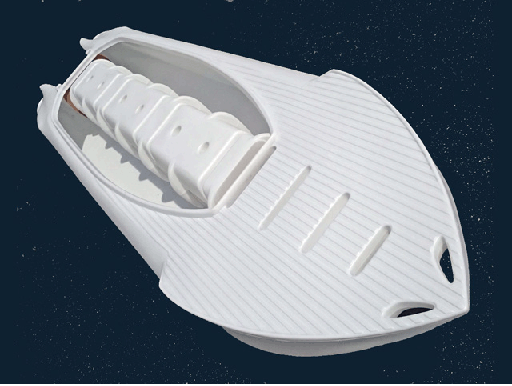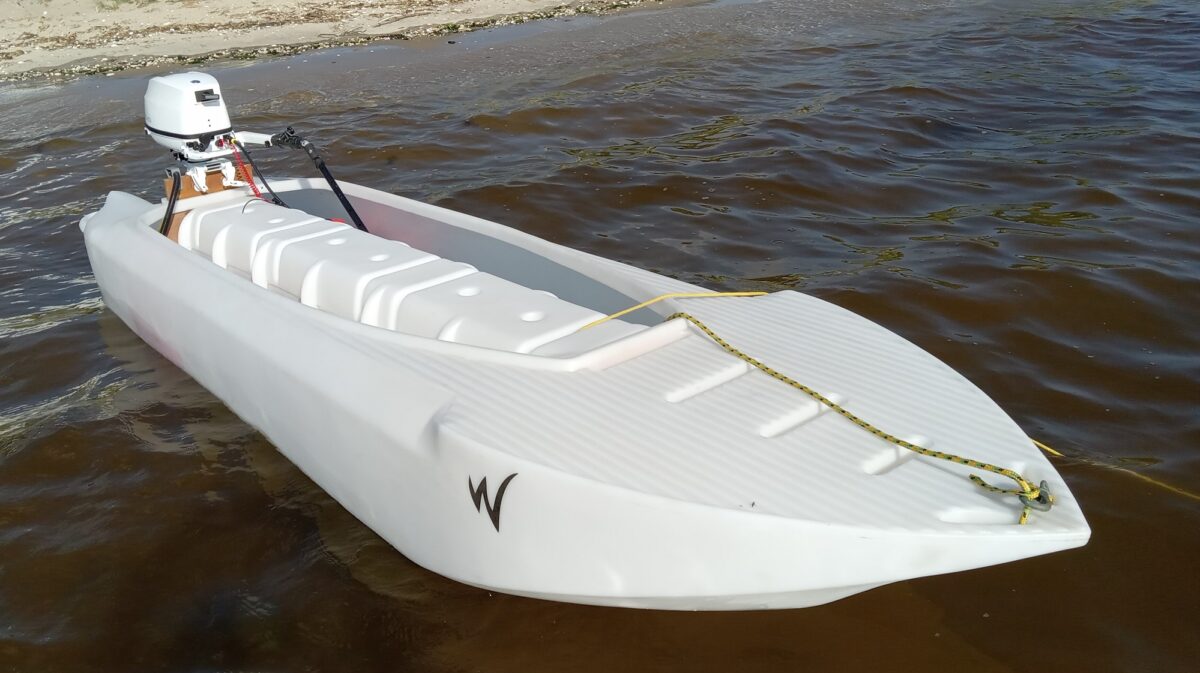Skiffs are small, open deck, typically flat bottomed boats that are similar to Jon boats, except for some characteristic structures such as a frontal casting deck, or platform, which most skiffs feature.
Skiffs are powered by outboard motors, and they are used mostly for recreational fishing in flat water, especially shallow water. A skiff may be required to travel through moving water, such as bays, tidal currents, and rivers.
The smaller skiffs are sometimes called micro skiffs, or microskiffs, and the smallest of them can carry no more than a single passenger going on a solo trip.
Even these skiffs of solitude are too heavy for car topping, especially by one person, and they lack a proper casting platform at the front. The best performance these very small skiffs can achieve in transportation terms is fitting on a pickup truck bed, and since the most lightweight of them weighs 150 lbs without the motor, one wonders how uploading and downloading it is even possible.
This sub category of solo skiffs is rather worthless for paddling, which can explain the motto “Forget About Paddling” coined by a manufacturer of one of these micro skiff.
In shallow water, paddling is the best alternative to motorizing, since motors are often prevented from proper functioning in such waters, be it as a result of too much draft, vegetation, underwater obstacles, or regulations. Therefore, the notion that anglers fishing out of small skiffs can forget about paddling is senseless.
The S4 cockpit features slanted sides that make it easy for the passengers to move their paddles closer to the boat, so this 38″ wide craft paddles more ergonomically, and feels like a narrower kayak in this sense, although in stability terms it’s more stable than any kayak.
And as for bigger skiffs, their users are forced to forget about paddling, and that’s too bad, since it reduces their mobility and limits their ability to fish in skinny water, and increases their exposure to unpleasant surprises at low tides, etc.
Lackluster performance can be expected from these small skiffs when it comes to seaworthiness, namely performance when driving or fishing in the ocean or in other moving water, and providing enough stability in the presence of wakes that big motorboats generate. This is reminding a similar problem that many Jon boat passengers and anglers experience.
The skiff is a successful boat design, especially in the southern states, where flats fishing is popular. However, as popular is it is, this design has left many problems unsolved, or poorly solved, so far.
The Wavewalk S4 – a revolutionary skiff, or a new type of boat?

Legally, the S4 is a kayak, and technically, it can be described as a catamaran. This is not a good start for a boat that claims to be a skiff. But its shallow draft and front deck can serve to justify its inclusion in the skiff category, at least in the sense that it offers to do what skiffs do, just better.
Better skiff in what sense? –
- Weight and portability – At 98 lbs without accessories, the S4 is significantly lighter than the lightest micro skiff out there. It is the only skiff that one person can easily car-top.
- Load capacity – With a weight to payload ratio that’s over 1:6 (the S4 can carry over 600 lbs on board), the S4 can carry up to three adult passengers or two large-size fishermen even in a motorized mode. This is over twice the load capacity of the micro skiff that’s closest in size to the S4 in weight, and it’s comparable to the performance of bigger skiffs.
- Stability – The S4 is more stable than any other small skiff, and the stability it offers is comparable to the stability that medium size skiffs offer.
- Balancing capability – A skiff that’s considerably bigger than the S4 can be more stable in absolute terms, namely resistance to change, but no skiff offers its passengers to ride a saddle seat that only high performance personal watercraft (PWC, or jet-ski) feature. This type of seat allows the users to balance themselves intuitively, and more effectively than any other type of seat does.
- Versatility and mobility – The S4 is the most versatile of skiffs, in the sense that it delivers top performance both when motorized and in a paddling mode. There is no other vessel whose user can host two extra passengers on board while driving in moving water, and later paddle it effectively in a solo mode on a long trip. Similarly, there is no other vessel that performs well both in the ocean and inland, in very shallow water.
- Seaworthiness – The S4 excels in going through waves, and it reacts extremely well to other boats’ wakes. Such performance isn’t typical for a small or even medium size skiff, and it can be found only in bigger models.
- Price to Performance – The S4 may not be the least expensive micro skiff on the market, since the solitude skiff is offered for less, but in terms of price to performance the S4 is in a league of its own, especially considering the fact that it is a trailer free boat, and trailers cost money.
For more information and demo videos visit the Wavewalk S4 skiff page »
Conclusion?
As shown here, the S4 barely fits in the micro skiff class, and it deserves to be in a class of its own. However, a class of boats with just one boat model in it is not a practical tool for classification, or for anything else. The S4 is somehow comparable to the Wavewalk 700 (W700), but again, a class of boats with just two boat models in it could be acceptable in design terms, but it would not serve its purpose in marketing terms.
And this article didn’t even touch the question of the S4 classification as a kayak…
